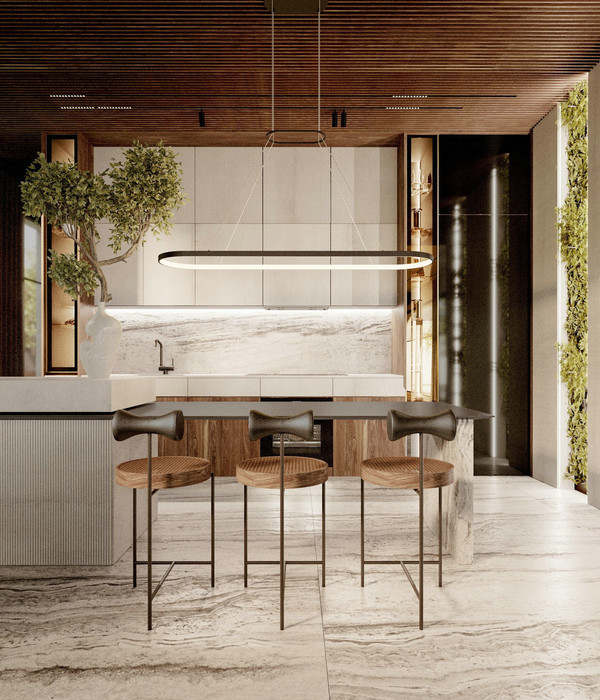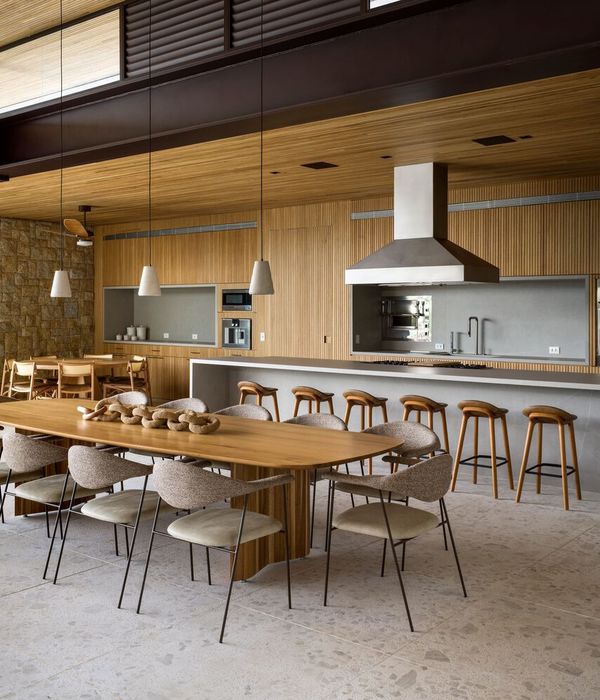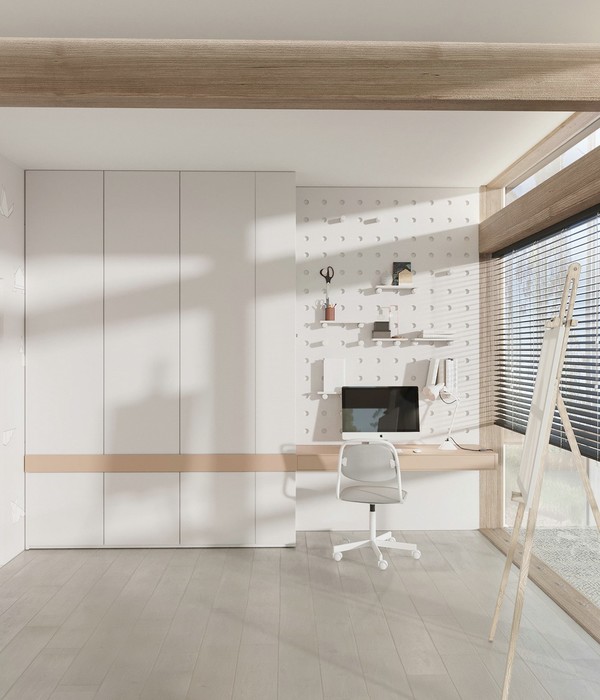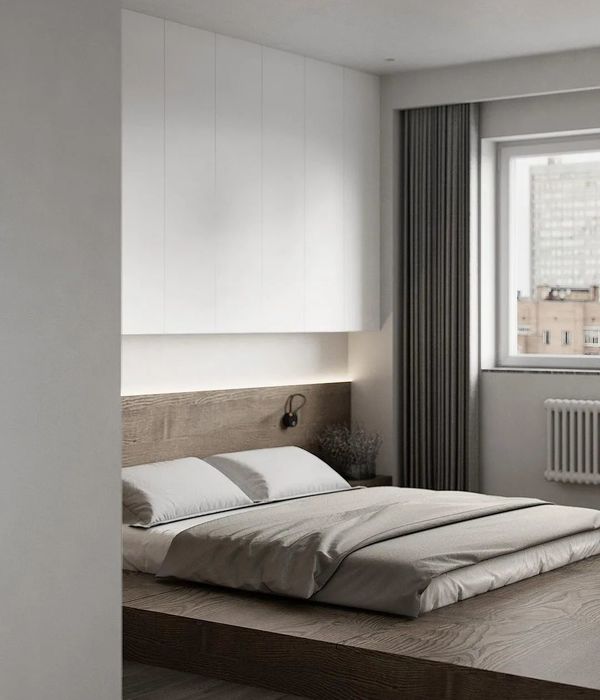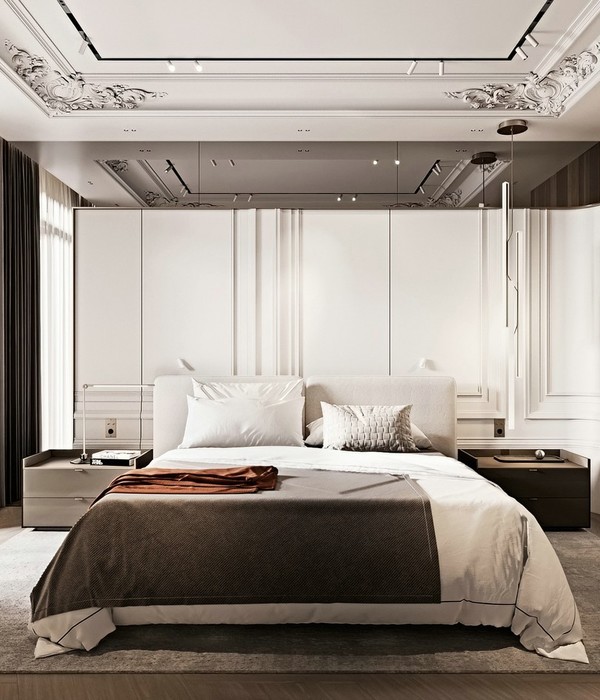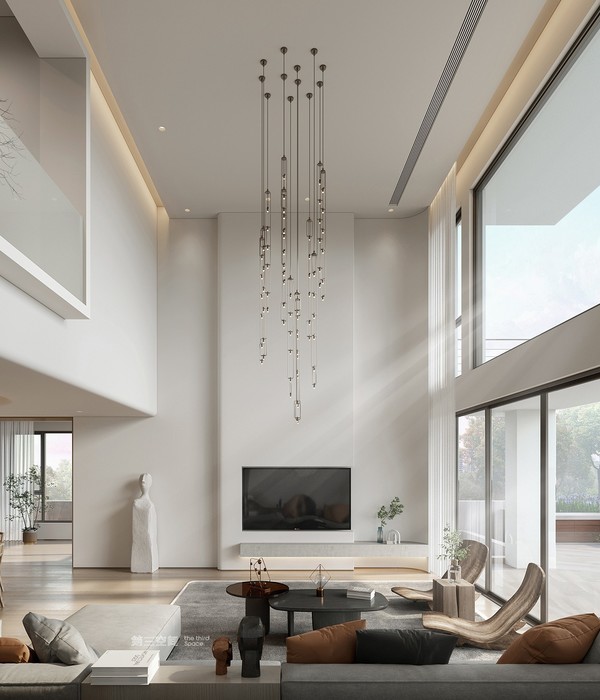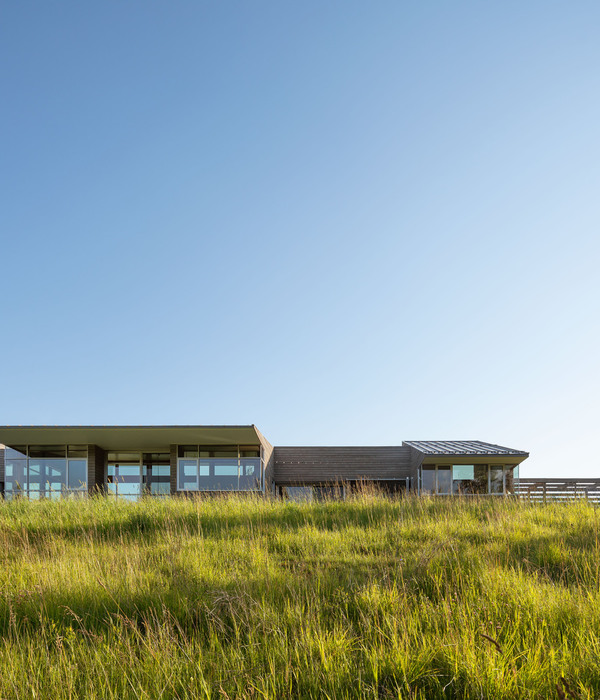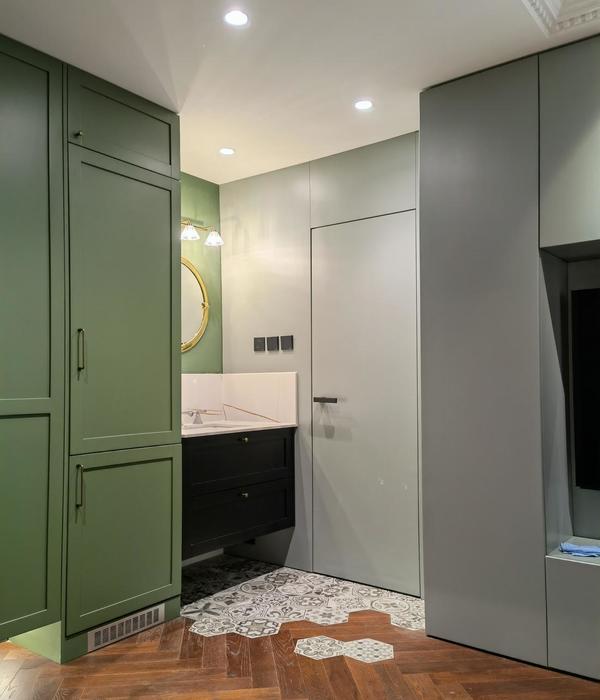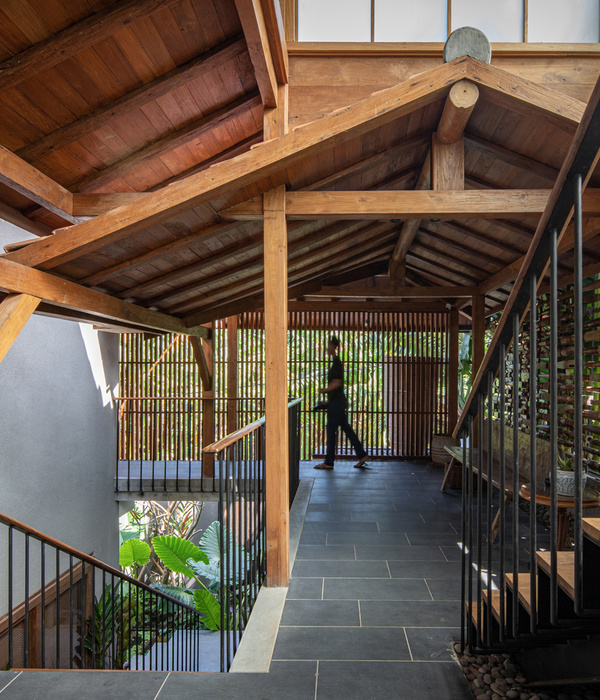Architects:Marte.Marte Architects
Area :185 m²
Year :2020
Photographs :Paul Ott
Structural Consultant :Frick & Schöch ZT GmbsH
Project Manager : Stefan Marte
Assistance : Stefan Andreas Marth
City : Weiler
Country : Austria
Positioned on a steep hillside along the northeast edge of the settlement, the House of Chambers lays the Rhine Valley directly at your feet. Surprisingly compact, even monolithic, the spatial sculpture digs its way into the slope: a cube and a courtyard in the middle of a wide alpine meadow.
From the outside, the building reveals little of the interior, opening up only along the diagonal line from the top of the valley to the bottom. The design represents a radical approach, packing the functions in a finely balanced system of chambers, connected geometrically, within which dwells a poetic-philosophic aspect.
The exposed concrete house dispenses with the recent usual customary strategies of houses with sculptured gardens, retaining walls, and terraces and makes a powerful counterargument: a house, a hillside, a courtyard. The powerful ensemble of cube-shaped houses and entrance courtyard, wedged into the hillside, solves all these tricky slope issues with just these two figures stamped into the landscape.
They are simply planted into the practically unchanged hill in the middle of a wide alpine meadow. Visitors approaching the building by car or on foot first arrive in the elevated courtyard with its reflecting pool. The corresponding sauna/wellness area, located at street level, is protected from the prying eyes by a wood-paneled courtyard. Cars and people disappear into the underground entrance concealed by the hillside.
The floor plan is based on 4 quadrants of a square = square squared. Three of these are enclosed by monolithic concrete walls, whereas the fourth quadrant is a southwest-facing terrace. The living area on the first aboveground level enjoys afternoon and evening sun. On the higher bedroom level, the building moves in the opposite direction, with the two remaining spatial units also encircling a terrace, but this time to the northeast. The two 'chambers' touch at the 'zero' line on the z-axis.
The concept dematerializes their structural link to the point of zero, the two rooms being connected instead visually by the space-defining rows of full-height windows and doors on the slope side. The various staircases - spiral and single-flight staircases - respond to the arrangement of rooms and function and set the stage for contemplating the sculpture and its symmetry on a walk-through along the diagonal. Small light wells at the top of the stairs and a skylight above the stairwell reinforce this effect.
It is amazing how well geometry, purism, and poetry pair together in this finely balanced design of a hillside house. This build composition skillfully circumvents the usual architectural traps in thinking and at the same time makes an unparalleled dialectical statement.
{{item.text_origin}}


